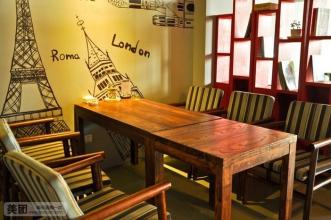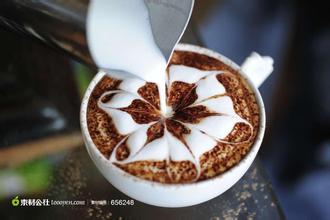Antigua La Capra Manor bourbon Red Wine treatment Coffee Bean Flavor description Manor
Antigua La Capra Manor bourbon Red Wine treatment Coffee Bean Flavor description Manor
The coffee beans in each producing area have their own characteristics, and they have won a lot of praise for Guatemala in the international community, especially the perfect coordination of the sour, sweet and mellow texture of Antigua; with a touch of smoke and a little more emphasis on its mystery, you will have a reason not to look for alternatives everywhere after tasting.
Guatemalan coffee beans are mostly cultivated in high-altitude volcanic soils belonging to the most advanced Arabica varieties. Due to the long ripening period, the beans are medium and dense (Guatemalan coffee beans are graded not on the basis of particle size, but on the basis of shortcomings), and the bean color is dark turquoise. The unique sour taste of fragrance, mellow, sweetness and freshness is characterized by the aroma and taste of coffee beans hidden in its sour taste. Therefore, coffee beans with this characteristic can be called first-class coffee beans. The name of the product is suitable for the taste characteristics of baking degree.
Each family member is responsible for the growth management, harvesting and handling of the coffee and the visit to the manor. A family estate that has grown coffee for more than a century is a legend in itself. The peeled coffee fruit is peeled by a Penagos machine. The peeled coffee fruit is fermented with 2.5% Pichia fermentans and 2.5% Pichia membranifaciens at 36 degrees Celsius for 36 hours, then washed twice with an ultrasonic cleaner, then soaked in clean water for 16 hours, and then dried to 11% moisture content. Then use the sheller to remove the shell, but sometimes the red wine treatment can be superimposed with the sun drying treatment, so it will be called red wine sun treatment. The sun treatment here only means to dry the fermented shell beans naturally in the sun, rather than drying the whole coffee fruit with skin like the whole sun treatment.
To give two examples as follows, the first example below has no sun-drying treatment, and the second example has superimposed sun-drying treatment. Washing is to remove the peel and pulp and then dry, and the degree of fermentation is very low.
Honey treatment is to remove the peel, with part of the pulp for drying, the drying process will produce a certain degree of fermentation.
The sun is dried with peel and pulp, and the degree of fermentation is slightly higher in the drying process.
The red wine treatment is to bring out the link of "fermentation" alone, and let the biological bacteria participate, so the degree of fermentation is the highest.
That's why the taste of red wine is so obvious.

Important Notice :
前街咖啡 FrontStreet Coffee has moved to new addredd:
FrontStreet Coffee Address: 315,Donghua East Road,GuangZhou
Tel:020 38364473
- Prev

Correct brewing method of hand-ground coffee-diagram of brewing method of coffee powder
But the price is that the particles get thicker and a lot of content is inextricable.
- Next

The milk treatment method of coffee flower-the treatment method of coffee bean
The milk treatment method of coffee lace-the handling method of coffee beans method 1: use a milk bubble pot to make handmade milk foam and pour the milk into the milk bubble pot, the amount should not exceed 1x2 of the milk bubble pot, otherwise the milk will overflow due to expansion when making the milk bubble. Heat the milk to about 60 degrees, but not more than 70 degrees, otherwise the protein in the milk will form.
Related
- What brand of black coffee is the most authentic and delicious? what are the characteristics of the flavor of the authentic Rose Summer Black Coffee?
- Introduction to the principle and characteristics of the correct use of mocha pot A detailed course of mocha pot brewing coffee is described in five steps.
- Which is better, decaf or regular coffee? how is decaf made?
- How much is a bag of four cat coffee?
- How about four Cat Coffee or Nestle Coffee? why is it a cheap scam?
- Which is better, Yunnan four Cats Coffee or Nestle Coffee? How about cat coffee? is it a fake scam? why is it so cheap?
- How about Cat Coffee? what grade is a hoax? which instant coffee tastes better, four Cat Coffee, Nestle Coffee or G7 coffee?
- Process flow chart of coffee making-Starbucks coffee making process what coffee tastes good at Starbucks
- The top ten best coffee beans in the world Rose summer coffee or Tanzanian coffee tastes good
- Yunnan four cat coffee is good to drink?_four cat coffee is a big brand? four cat blue mountain coffee is fake?

